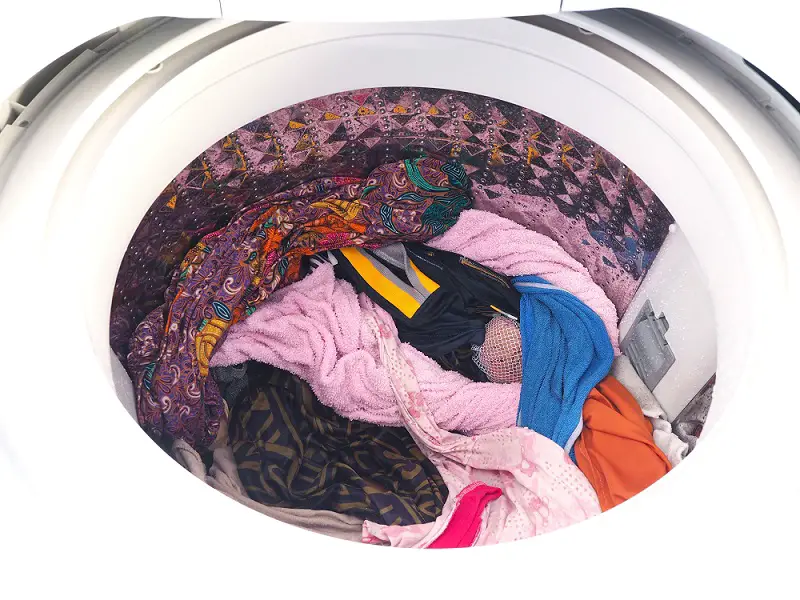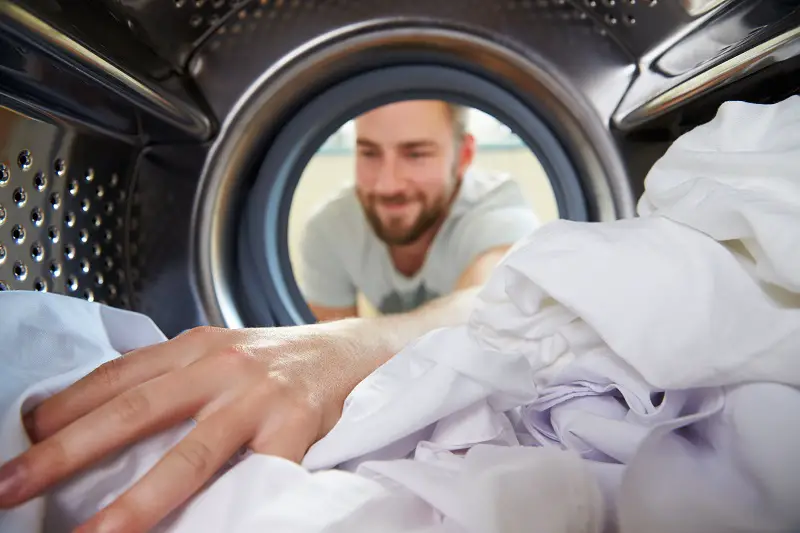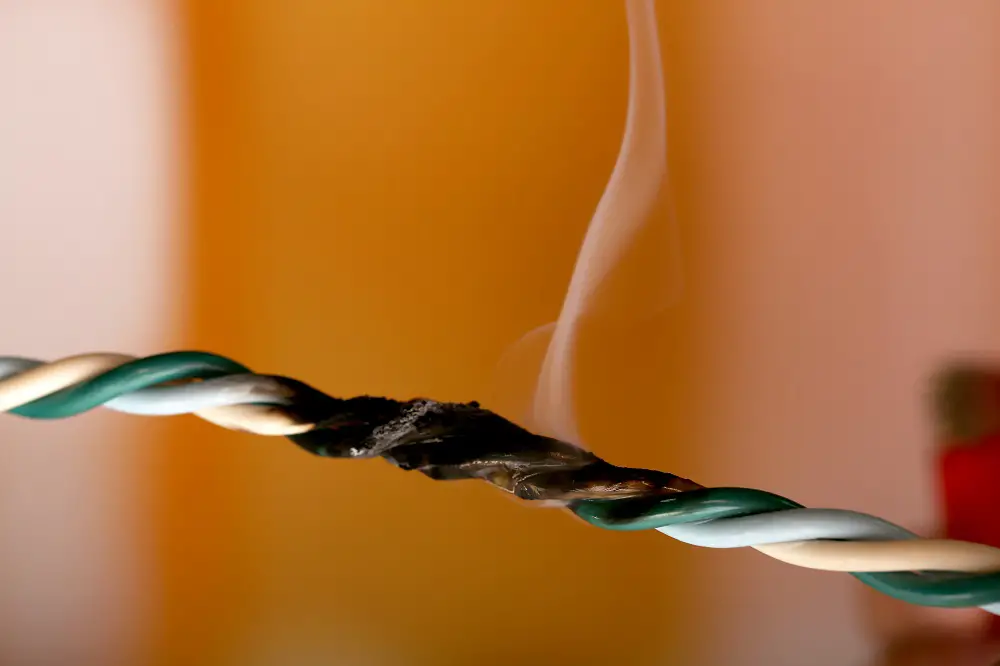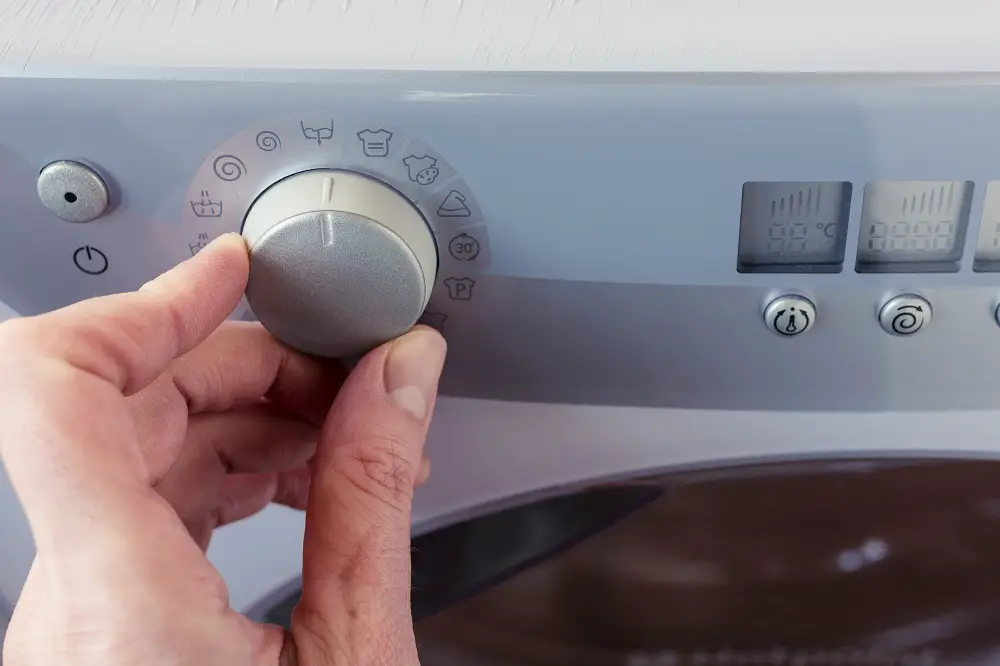A portable spin dryer is much smaller than a traditional dryer and uses centrifugal force to dry the wet laundry instead of heat. The result is mostly dry laundry that must be hung to completely dry.
It is similar to how a washing machine wrings out excess water at the end of the washing cycle.

Portable spin dryers come in different sizes and types with several Pros and Cons.
Table of Contents
How Effective Are Portable Spin Dryers?
Portable spin dryers are very effective when drying small amounts of laundry and removing up to 90% of the excessive water in just a couple of minutes. They are even effective if you have to apply them twice for a full washer load. They are not effective for complete drying.
Usually, a spin dryer gets your clothes around 90% dry. This number varies on the model and it also depends on how wet the laundry is, how much laundry there is, and when you put it in the dryer.
These portable dryers take only a few minutes for each load, helping make up for the smaller capacity. While most spin dryers dry the wet clothes most of the way in under five minutes, some can dry clothes in under three minutes.

A spin dryer usually spins at approximately 3200 rpm (revolutions per minute) for about 2 – 3 minutes. The water removed from the clothes is as much as a conventional tumble dryer in 25 – 35 minutes.
Since the clothes don’t get completely dry in a spin dryer, they need to be tossed into a conventional dryer for a few minutes or hung to dry.
A full-sized dryer uses warm air or hot air to dry clothes, with a drying time of about 30 minutes to an hour for 15 – 20 pounds of laundry. On the other hand, a portable spin dryer takes about 3 – 5 minutes to dry 5 – 13 pounds of clothing at a time.
There are a few models that have the capacity for larger loads.
Pros and Cons of Spin Dryers
Here are some of the pros and cons associated with portable spin dryers:
Pros
- Small size and weight:
A portable dryer is designed to be compact for easy storage and transportation. It doesn’t occupy much room and can be stored away between uses. - Energy efficient:
Since it takes less time and no heat is used in the drying process, a portable spin dryer has fewer energy costs. A spin dryer uses just 400 Watts of electricity compared to the 2,400 Watts used by a typical tumble dryer. - Cheap:
A durable, high-quality portable dryer will cost anywhere between $60 – $250. This is cheaper than a conventional dryer, which can cost anywhere between $200 – $1750. You can also save money since you can avoid trips to the laundromat. - Easy to use:
Spin dryers are easier to use than conventional dryers. It’s as easy as loading the wet laundry into the dryer and turning it on for spin drying the clothes; a straightforward operation. - No moisture or humidity problems:
Unlike conventional dryers, portable spin dryers don’t increase moisture or humidity levels in the room. There won’t be any musty smell or issues with mold. - Short drying time:
Although these dryers have a small capacity, they make up for it by drying each load in a few minutes (mostly under five minutes). - Gentle on clothes:
Spin dryers are often gentler on clothes than conventional dryers. Usually, residual detergent and dirty mineral deposits on the clothes get washed away in the water draining from the spinner. It’s also a better option for gentle fabric washing than tumble dryers.
Cons
- Small load capacity:
Since portable spin dryers are small by necessity, one downside is the smaller load capacity than traditional dryers. Most have a capacity of only 4 – 5 pounds at a time. - Doesn’t dry completely:
Since portable spin dryers use high-speed centrifugal force to dry laundry instead of heating at high temperatures, it doesn’t completely dry the laundry; a drying rack or a clothesline might be required. - Same as a washing machine:
A portable spin dryer’s drying process is similar to how a washing machine wrings out excess water from the laundry at the end of the washing cycle. Both require you to hang the laundry to finish drying. - Water draining:
While some portable dryers have a pump to remove excess water from the spin dryer, the hose must be placed in a sink or tub for water to drain. For models that drain water through a vent at the unit’s bottom, provision must be made to catch the water.
When to Buy/Use A Portable Spin Dryer?
If you’re wondering whether a portable spin dryer is a suitable choice for you, here are some points to help make up your mind:
- If you’re tight on space in your apartment, dorm room, or even RV, the small size of a portable spin dryer makes it apt to use in tiny areas.
- A portable dryer makes it easy if you travel often and want to take along your own dryer.
- It’s a good option for doing laundry for one or two people as it takes lesser time to dry smaller loads. It’s especially great to dry single items.
- This is a cheaper alternative to conventional dryers with a large capacity that consumes more energy. You can also save money by avoiding trips to the laundromat.
Portable spin dryers are an excellent option for a compact, cheaper, and more energy-efficient way of drying your laundry.
Although you must remember not to overload the dryer and that the laundry doesn’t dry 100%, you’ll need to hang it for complete drying. With no heat, the clothes are spun at high centrifugal force, similar to the end of the washing cycle in a washing machine.



